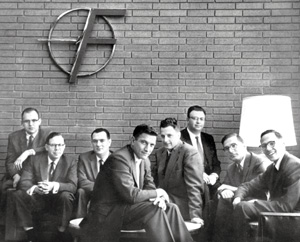The airwaves today are filled with contrasting visions for the future of government. Obama is arguing for greater resource allocation to government in order to safeguard the middle class and to restore jobs, while Romney is arguing for less capital allocation to government via lower taxes and the ability for the free market to allocate resources to their highest and best use. More government! More free enterprise!
One camp appears to have no qualms with massive public organizations while the other no qualms with massive private organizations.
Like many debates, such a view is too simplistic and in fact the actual villain may well be size of organization and monopoly power. Be it government agencies (DMV, USPS), banks too big too fail, United Airlines, Novell or MSFT - a common model of failure is the absolute size of the organization.
It seems axiomatic to me that monopolies and massive organizations are prone to waste, terrible customer satisfaction, and too big too fail syndrome whereby the political process is vested in the propagation of the too large entity in question - bailing out Citibank, the USPS, the Osprey - and blindly supporting continued funding of such entities independent of reason. What scares me most about monolithic organizations is they appear impervious to the concerns of people vs the concerns of the organization and its own idiosyncrasies.
Go the DMV and then ask do you want a single-payer system? Get on a 1-800 Large Company help line and then ask if you want too-big too fail?
Silicon Valley is tied to Schumpeter's vision of creative destruction and Clay Christensen's Innovator's Dilemma.
Organizations appear to fail once they reach a certain size, drift away from original mandate, and destroy capital. And...importantly this failure is viewed as both a necessary and good thing. Human, financial, and physical capital is freed from the constraints of too-big, too-slowness and flows to smaller, newer, more rewarding entities.
I suppose the piling of talent out of Facebook (ex Path) and Twitter (Square, Medium) is just an example of human capital flowing to the next small new new thing. The movie Something Ventured chronicles the serial connection of talent from Shockley, to Fairchild Semiconductor, to Apple...and on.
The market does serve a vital force in allowing such a flow to happen - ie in the Valley financial and customer capital seems to follow human capital. However, in banking, government, automotive, etc - there appear to be constraints to end of lifing things that are too big.
Clearly, not all government is per se bad (man on the moon, DARPA Internet, etc), but there appears to be a point when government orgs, like Citibank and its private brethren, grow too big to evaluate, manage, understand, and, therefore, to be able to reasonably decide whether to continue to fund.
In many ways, the core question of this campaign may not be public vs private but instead a question of size, quality of output, and tolerance for eliminating non-performing and failed programs.
Moreover, the biggest organizations then rig the system for capital and resource allocation, frustrating the "failure" process to return us to equilibrium.
As an example, in let's look at the growth in the Department of Education
- 1965 $1.5bn
- 2000 $33bn
- 2008 $68bn
Similarly, Citigroup has grown to $1.9 trillion in assets and 260,000 employees from $800bn at the time of its formation in 1998. I defy anyone to manage that beast.
How do we feel about size rather than public vs private as a more nuanced debate?
Are our organizations architected to allow failure?
In my mind too big to fail is as important a discussion vis a vis government as it is our banking system.
How do we build a smaller, more nimble, shorter lived set of entities that we can count on for energy, results, and human-centric execution? How to explain failure is the expected state of being versus a symptom of national decline?
Government needs to tolerate failure and reallocate the massive capital to better uses, while too big to fail private enterprise should be viewed with equal suspicion.


